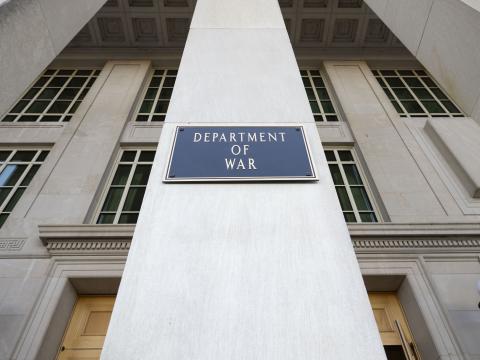Game On: Businesses Use Techniques from the Gaming World to Increase Engagement
The business world is taking a cue from the gaming world, increasingly using a system of incentives and old-fashioned competition to spur employee engagement. Gamification, which started out on video game screens with top score designations and leaderboards, is now helping companies meet real-life objectives.
“We’re taking what we know from games … and applying that to non-game contexts,” said Mike Campanelli, senior systems engineer at RadiantBlue Technologies, in a presentation from the AFCEA Emerging Professionals in Intelligence Committee to the entire Intelligence Committee.
Gamification is used to motivate people to achieve goals. In the business world, that means improving engagement, transparency of work and connecting employees’ actions to business outcomes. The consumer world adopted the concept in the last decade, with applications like Foursquare that digitally reward people checking in to places and through loyalty programs at stores that allow consumers to earn discounts.
Businesses are learning from the success of gamification in the consumer world. Seventy percent of business transformation efforts fail due to lack of engagement, Campanelli reported, and gamification can help with that by providing measurement, feedback and incentives, both intrinsic and extrinsic.
“Incentives are an integral part of this,” Campanelli said. “They really have to work together to make this work.” For businesses, the incentives have to be tied to specific goals the company is trying to accomplish.
Campanelli offered the example of the Deloitte consulting firm, which turned to the concept to boost its underutilized online training program. The gamified system allows users to personalize their learning priorities and earn digital badges for accomplishing tasks. It also gives users a customized leaderboard with the 10 users closest to them in competition. The new system resulted in a 37 percent increase in the number of users who return to the online program’s site each week.
Gamification is big business. Campanelli offered up that the worldwide gamification market was worth $242 million in 2012. In 2016, the market is expected to be worth $2.8 billion, with enterprise gamification predicted to eclipse consumer gamification. Large companies such as Major League Baseball, Adobe, Ford and Walgreens are using the concept, and consulting firms have begun practices targeting gamification for Fortune 500 companies.
“Gamification works,” Campanelli said. “It’s been proven effective by large companies when it is done right. But it’s not simple to implement.” Part of doing it right is using it to solve a specific problem, engage users and drive repeat usage.
He also said, “We need to understand why this works. … The psychology is what drives all of the engagement.”
Gamification techniques strive to leverage people’s natural desires, Campanelli said. The concept isn’t all that new—incentives such as coins and ribbons have been around in the military and government world for a long time—but gamification goes about it in a different way.
A key to success in enterprise gamification is for users to not feel like they are playing a game and to employ techniques that drive users toward a specific goal, he said. And a little competition doesn’t hurt either.
Discussion among the group pointed out that gamification seeks to point out positives—this will happen if you do that—rather than negatives, where bad things will happen if you don’t do something. It represents a different culture, one that might not have reached the intelligence community yet.
Members of the audience discussed how gamification could be used in the intelligence community.
“Intelligence analysts everywhere do their jobs for bigger reasons. I don’t think you need to incentivize them beyond service to their country,” Campanelli said. “But large, organizational change, for example, moving people to a new system or for internal methods that require buy in, gamification has merits for that, I think.”
The audience discussed other possible applications in the intelligence community, including leadership development, human resources and career development.
When asked about the bottom line, or whether there is a return on investment for enterprise gamification, Campanelli said rather than monetary return, the return is more in the form of engagement, raising awareness and sparking thought leadership.




Comments